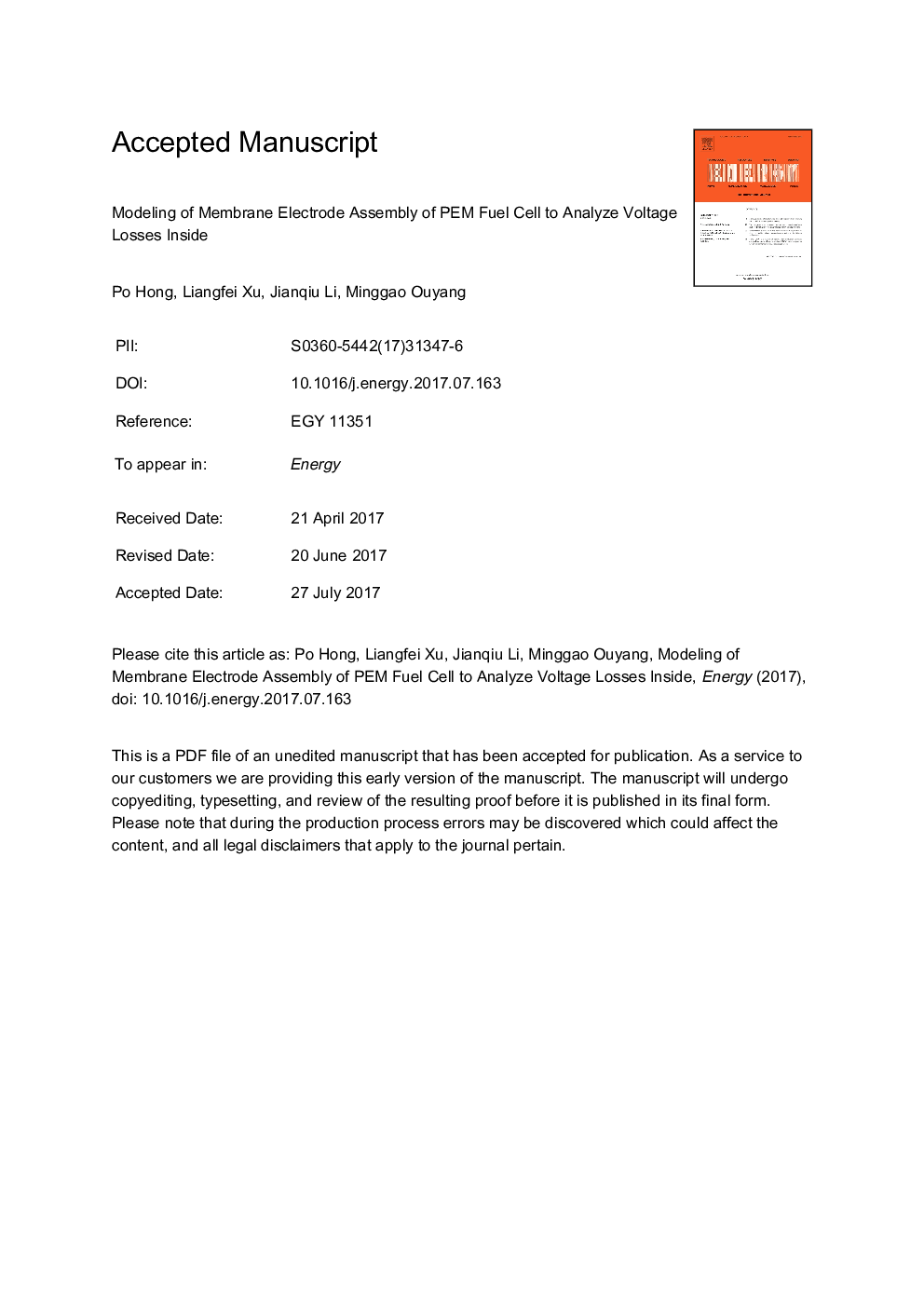| Article ID | Journal | Published Year | Pages | File Type |
|---|---|---|---|---|
| 8072724 | Energy | 2017 | 36 Pages |
Abstract
The membrane electrode assembly plays an important role in determining performance of a PEM fuel cell but the mass transport and electrochemical reactions inside are extremely complex. Recently more research efforts are made on modeling cathode catalyst layer to explain phenomena related to water content. In this paper, a pseudo two-dimensional model of cathode catalyst layer together with a one-dimensional model of membrane is proposed to analyze all kinds of voltage losses inside. The model originates from two probable approaches of oxygen transport, namely via the gas pore and through the electrolyte solution to reach reaction sites. Simulation results show that the inter-diffusion coefficient of oxygen, nitrogen and water vapor affects the mass transport significantly even though the Knudsen diffusion begins to emerge with respect to scale of the gas pore. The cathode catalyst layer can be divided into three different zones and there exists a special zone with only proton conduction. As the electrode electrolyte potential varies, the special zone expands towards the CCL/CGDL interface and it implies accumulation of water content inside. The composition of total proton conduction resistance changes and the proton conduction resistance in the special zone cannot be neglected in comparison with that in membrane.
Related Topics
Physical Sciences and Engineering
Energy
Energy (General)
Authors
Po Hong, Liangfei Xu, Jianqiu Li, Minggao Ouyang,
